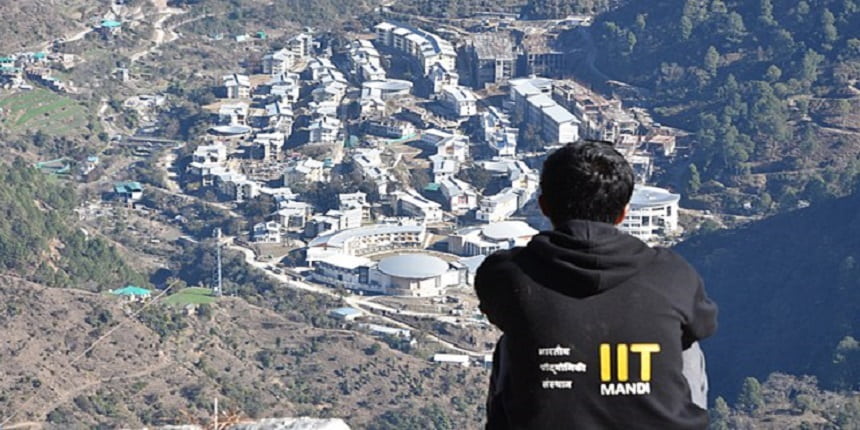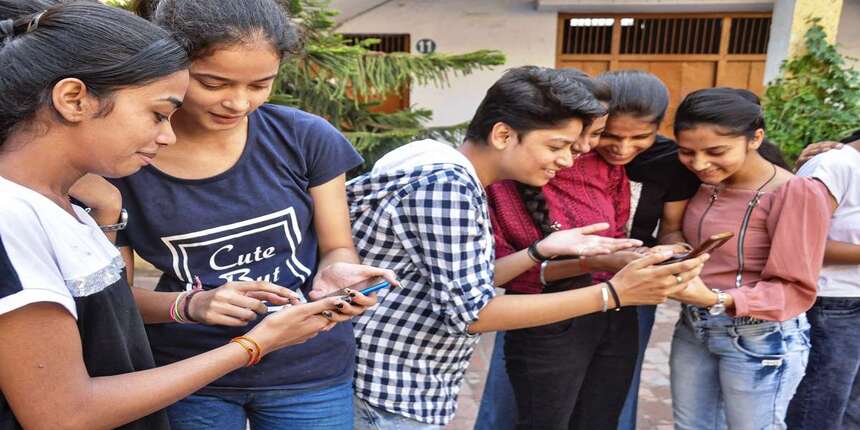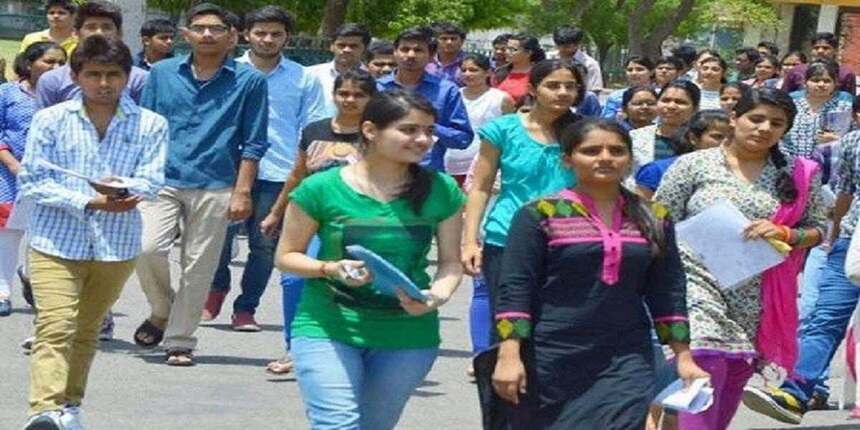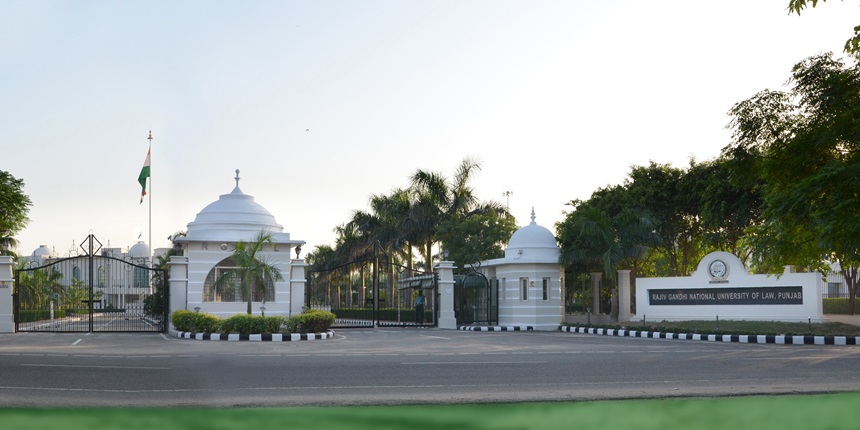Most top law schools have less than 50% women students: Analysis
More women write the CLAT than men. Then, why are there such few women at the undergraduate level in India’s top law schools?
 Of the 21,670 students in UG programmes at the 28 law colleges, 10,994 are male and 10,676 are female. (Representational image/ PTI)
Of the 21,670 students in UG programmes at the 28 law colleges, 10,994 are male and 10,676 are female. (Representational image/ PTI)Sanjay | January 15, 2024 | 10:13 AM IST
NEW DELHI: Even though female candidates have outnumbered male candidates for the Common Law Admission Test (CLAT) for two consecutive years, the majority of top Indian law colleges still have a significantly-skewed gender ratio in their classrooms.
In CLAT 2023, the national-level exam for admission to National Law Universities (NLUs) and other top law colleges, 56% of the candidates were women. In CLAT 2024, 57% were female. An analysis of the top 30 law colleges – as ranked by the government’s National Institutional Ranking Framework (NIRF) – shows that 19 out of the 28 colleges offering undergraduate law programmes and 10 out of 29 colleges offering postgraduate (PG) courses have less than 50% female students.
The top 30 colleges have 23,748 UG and PG students – 12,005 male and 11,743 female.
According to law students and advocates, gender biases and safety concerns are among the major reasons for the skew. However, women’s representation in law colleges is improving with more women aspiring to build careers in law. With more support from law colleges, fixed seats in recruitment, and the requirement of female judges for cases dealing with rape, the number of female students in law is likely to increase, said law professors.
Also read 3-year Vs 5-year LLB: Which is better?
NIRF Data
A total of 162 colleges participated in the law category of the NIRF 2023 rankings, announced on June 5. The National Law School of India University (NLSIU) Bengaluru and National Law University (NLU), Delhi retained their first and second positions, respectively, for the sixth consecutive year. NALSAR University of Law, Hyderabad bounced back to the third position replacing Symbiosis Law School, Pune, a private institution which was among the top three in NIRF 2022.
Among the top two, the percentage of female students doesn’t even touch 40%. The only institution among the top five with at least 50% female students is Jamia Millia Islamia, New Delhi.
LLB: Student gender ratios in top law schools
Institute | % Female |
NLSIU Bengaluru | 36 |
NLU Delhi | 39 |
NALSAR University of Law, Hyderabad | 43.4 |
WBNUJS, Kolkata | 37 |
Jamia Millia Islamia, New Delhi | 51.4 |
Symbiosis Law School, Pune | 56.2 |
Gujarat NLU, Gandhinagar | 43.2 |
Siksha 'O' Anusandhan, Bhubaneswar | 57 |
IIT, Kharagpur | 36.7 |
Saveetha Institute of Medical and Technical Sciences, Chennai | 48.5 |
Kalinga Institute of Industrial Technology, Bhubaneswar | 55 |
Christ University, Bengaluru | 45.8 |
AMU, Aligarh | 35.7 |
SASTRA, Thanjavur | 66.7 |
LPU, Phagwara | 54.8 |
NLIU, Bhopal | 49.6 |
GGSIPU, New Delhi | 42.2 |
RGNUL, Patiala | 77.5 |
RMLNLU, Lucknow | 39.9 |
BHU, Varanasi | 28.8 |
Amity University Haryana, Gurgaon | 39.9 |
NUSRL, Ranchi | 45.4 |
Alliance University, Bengaluru | 49.5 |
Army Institute of Law, Mohali | 63.5 |
Nirma University, Ahmedabad | 52.6 |
NLUJAA, Kamrup | 43.7 |
Manipal University, Jaipur | 48.4 |
NLU, Cuttack | 46.4 |
* Institutions have been listed in the order of their ranks in the NIRF.
Babasaheb Bhimrao Ambedkar University, Lucknow, was the only one among the top 10 to not provide data on its UG students, even though it offers a five-year integrated BBA-LLB programme. Six of the top 10 law colleges have less than 50% female students enrolled in UG courses.
Of the 21,670 students in UG programmes at the 28 law colleges, 10,994 are male and 10,676 are female. The percentage of female students varies across institutions, ranging from 29% in Banaras Hindu University (BHU) Varanasi, to as high as 77.5% in Rajiv Gandhi National University of Law, Patiala.
Also read ‘Global perspective’ and better jobs: Why Indians are opting for LLM abroad
The five law schools with the highest percentage of female students in UG are Rajiv Gandhi National University of Law, Patiala (77.5%); Army Institute of Law, Mohali (63.5%); Shanmugha Arts Science Technology and Research Academy (SASTRA), Thanjavur (66.7%); Symbiosis Law School, Pune (56.2%); and Kalinga Institute of Industrial Technology, Bhubaneswar (55%).
The lowest percentage of UG female students are at Banaras Hindu University, Varanasi (28.8%); Aligarh Muslim University, Aligarh (35.7%); Indian Institute of Technology, Kharagpur (36.7%); National Law School of India University, Bengaluru (36%); and Guru Gobind Singh Indraprastha University, New Delhi (42.2%).
Muskan, a final-year LLB student at Chandigarh University said: “I wanted to be a clinical psychologist and also wanted to pursue criminology. But in India, you cannot study criminology separately. So, I pursued LLB and I will go for psychology for my masters degree. But for the time being, I want to be a criminal litigator.”
Although she has not faced gender discrimination herself, she said she has “heard” of incidents from juniors and students in other institutions. “They informed me that their male counterparts are priortised over them in projects and assignments by faculties. Male students get more opportunities compared to female students while representing cases in moot courts of law colleges. Many of my fellow female classmates dropped out from law courses in second and third year as they thought that they are not meant to make a career in law fields. Law is still dominated by male judges and advocates,” she said.
Among the top 30 institutions, Shanmugha Arts Science Technology and Research Academy, Thanjavur, is the only law college which does not offer a PG programme and Indian Law Institute, New Delhi, is the only law college without a UG one.
PG law courses
In postgraduate law, women have significantly better representation. At NLSIU, 54% of the PG batch is female; at NALSAR Hyderabad, close to 60% is female.
LLM: Student gender ratios in top law schools
Institute | % Female |
NLSIU, Bengaluru | 54 |
NLU, Delhi | 40.7 |
NALSAR University of Law, Hyderabad | 58.9 |
WBNUJS, Kolkata | 40.2 |
Jamia Millia Islamia,New Delhi | 51.5 |
Symbiosis Law School, Pune | 67.5 |
Gujarat NLU, Gandhinagar | 59.4 |
Siksha 'O' Anusandhan, Bhubaneswar | 53.4 |
IIT, Kharagpur | 61.7 |
Babasaheb Bhimrao Ambedkar University, Lucknow | 57.8 |
Saveetha Institute of Medical and Technical Sciences, Chennai | 53.4 |
Kalinga Institute of Industrial Technology, Bhubaneswar | 74.5 |
Christ University, Bengaluru | 71 |
AMU, Aligarh | 43.4 |
LPU, Phagwara | 80 |
ILI, New Delhi | 34.6 |
NLIU, Bhopal | 41.7 |
GGSIPU, New Delhi | 52.2 |
RGNUL, Patiala | 60 |
RMLNLU, Lucknow | 42.8 |
BHU, Varanasi | 34.3 |
Amity University Haryana, Gurgaon | 45.8 |
NUSRL, Ranchi | 58.9 |
Alliance University, Bengaluru | 70 |
Army Institute of Law, Mohali | 53.4 |
Nirma University, Ahmedabad | 73.3 |
NLUJAA, Kamrup | 41.9 |
Manipal University Jaipur | 65 |
NLU, Cuttack | 46 |
Also read ‘CLAT exam in regional languages is impractical’: NUJS VC
The total number of PG law students across the 29 institutions is 2,078, including 1,011 male and 1,067 female students. Some institutions, such as Lovely Professional University in Phagwara and Kalinga Institute of Industrial Technology in Bhubaneswar, have notably high percentages of female students (80% and 74.5%, respectively), while others, such as ILI New Delhi and BHU, have lower percentages (34.6% and 34.3%, respectively).
The five institutions with the highest percentages of female students in PG law are Lovely Professional University, Phagwara (80%); Kalinga Institute of Industrial Technology, Bhubaneswar (74.5%); Alliance University, Bengaluru (70%); Symbiosis Law School, Pune (67.5%); and Manipal University Jaipur (65%).
The law institutes with the lowest percentage of female students in PG courses are BHU (34.3); Indian Law Institute, New Delhi (34.6); WBNUJS, Kolkata (40.2); NLU Delhi (40.7); and NLIU, Bhopal (41.7).
More women in law
On the condition of anonymity, a Delhi University professor said that the classrooms of law colleges are still dominated by male students. “However, we are witnessing a continuous increase of female students in the law courses,” he said. “Several states have also fixed women’s seats in law colleges and judicial services. This will help more women pursue law.”
Gautambala Nandeshwar, principal associate at MV Kini Law Firm in Mumbai, said that in a few fields within law, men have the upper hand, but there is space for everyone to make a career in law.
Also read NLU Odisha ‘reaching out to the world’ with new law courses, foreign partnerships: VC
“Domination of men is in every field. It does not mean that women should not pursue their careers. To think that there is no space for women in law fields is completely unsatisfactory. In every field, you have to make your own space and if you are good enough, there is work for everyone,” she said. “There are no major problems for female students in law colleges. I feel this apprehension of facing problems is there when they start actual practice in courts. This sentiment is not there in civil practises and corporate law firms. This sentiment can be felt in criminal law where men have the upper hand. One has to visit police stations and female lawyers are not very comfortable. It depends upon the nature of work.”
Follow us for the latest education news on colleges and universities, admission, courses, exams, research, education policies, study abroad and more..
To get in touch, write to us at news@careers360.com.




